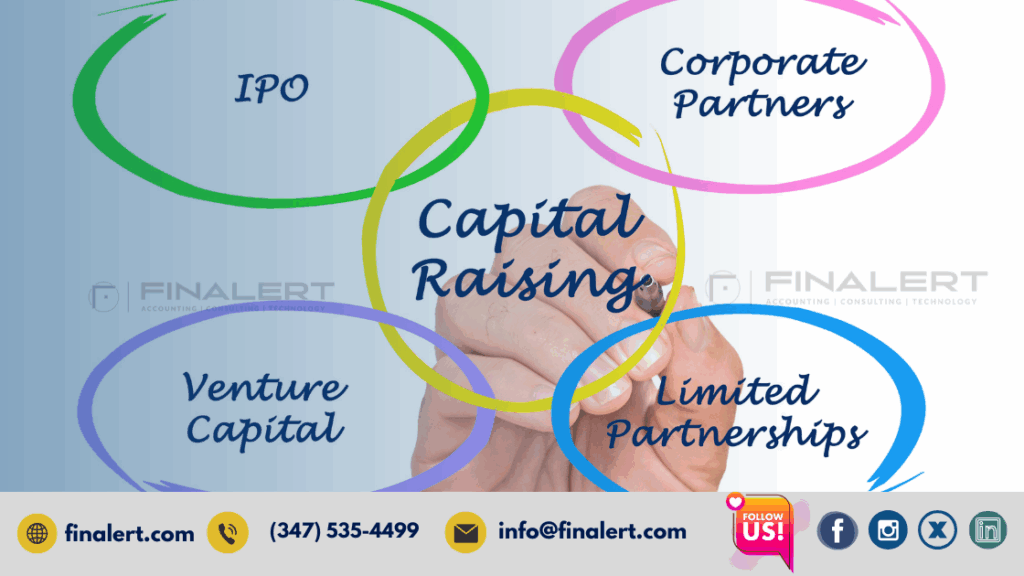
In 2025, the bar for raising capital is higher than ever. With tighter funding environments, cautious venture capital firms, and increased scrutiny across industries, investors are no longer swayed by a compelling pitch alone. Today’s investors want precision, clarity, and reliability, especially when it comes to your financials.
Founders must present more than just vision. They must demonstrate that their financials are not only well-organized but also tell a clear story of growth, efficiency, and long-term potential. Whether you’re pursuing pre-seed, Series A, or beyond, being “investor-ready” means your numbers must hold up under scrutiny.
This guide explores the specific financials investors expect to see in 2025, and how startups, especially in sectors like SaaS, e-commerce, and tech, can prepare to meet those expectations.
In today’s funding landscape, investors focus on sustainable, data-backed growth. Flashy top-line revenue is no longer enough—investors want to see operational efficiency, a path to profitability, and strong unit economics.
Key investor mindsets in 2025:
Investors are not just investing in your product—they’re investing in your financial management capabilities.
Before anything else, investors want to see your historical financials—a breakdown of your past performance, typically over the last 12 to 24 months.
These must be:
Key statements to prepare:
If these statements aren’t prepared or reconciled regularly, it’s a red flag for investors. Many startups use outsourced CFOs or accountants to ensure clean books before fundraising.
Revenue quality is as important as revenue growth. Investors in 2025 examine revenue trends with deep attention to:
These metrics tell investors whether your growth is healthy and repeatable, or simply being bought with high spend and high churn.
Burn rate is the rate at which you are spending capital. Investors look at both gross burn (total expenses) and net burn (expenses minus revenue).
Example: If you’re raising $2M, investors will ask: How long will this last? What milestones will you achieve before needing more capital?
Startups with a burn multiple (net burn divided by net new ARR) below 1.5 are considered capital efficient.
Investors don’t expect perfect forecasts—but they expect well-reasoned and data-supported projections.
Your financial model should include:
Pro tip: Back every assumption with either your historical data, market research, or actual sales conversations.
Investors are obsessed with unit economics—how much it costs to serve one customer and how much you make in return.
Metrics to include:
For marketplaces and SaaS products, margins directly affect scalability. If you’re growing fast but losing money per customer, that’s a warning sign.
Investors want a clean, clear cap table that shows who owns what, how much equity has been issued, and how dilution affects future rounds.
Your cap table should include:
A messy cap table can delay or kill a deal—keep it simple, accurate, and up to date.

Investors want to know exactly how their capital will be used—and what value it will create.
Break down your use of funds into clear categories:
Pair this with a milestone plan, e.g.:
| Timeframe | Milestone |
|---|---|
| 3 months | Launch new product version |
| 6 months | Reach $100K MRR |
| 9 months | Expand into two new markets |
| 12 months | Raise Series A |
This shows that you’re using capital efficiently to hit investor-relevant milestones.
By 2025, many investors expect audit-readiness even at early stages. This doesn’t mean a formal audit—it means having records that are clear, compliant, and organized.
Checklist for financial hygiene:
Outsourced CFO services or finance consultants often help startups create this investor-ready infrastructure.
Avoid the following common financial red flags:
Transparency builds trust. If you’re addressing a challenge (e.g., high churn), be upfront—and explain the corrective steps you’re taking.
Investors will want a financial data room that includes:
Consider preparing a 1-page financial highlights summary for quick reference during investor meetings.
While building all this from scratch can be overwhelming, many startups rely on affordable tools to streamline financial prep:
Use automation wherever possible, but always understand your numbers—investors will test your grasp of the details.
Raising capital in 2025 requires more than passion and product-market fit; it demands financial credibility. Founders must present a clear, consistent, and data-driven story that demonstrates how investor capital will be utilized and leveraged for growth.
From burn rate and margins to CAC, runway, and revenue projections, each metric is a piece of the puzzle investors use to assess risk and reward. By building a financial foundation that reflects transparency, insight, and operational maturity, you’ll not only raise capital but you’ll also build long-term trust and valuation in the process.
For startups serious about growth, being financially ready is no longer optional; it’s a competitive advantage.
Similar Articles
No results available
Get in touch with Finalert today for tailored business solutions!
No results available
Ready to thrive? Connect with Finalert today and let’s succeed together in the dynamic global market.
© 2025 Finalert. All rights reserved.
Ready to thrive in the dynamic global market? Finalert LLC offers expert financial services, including accounting, consulting, and technology solutions, tailored to your business needs.
Address
Accounting
Quick Links
Consulting
Industries
© 2025 Finalert LLC. All rights reserved.